Categories
- Argentina
- Chile
- Antarctica
- Easter Island
- Falklands (Malvinas)
- Bolivia
- Peru
- Uruguay
- Paraguay
- Brazil
- Venezuela
- Colombia
- Ecuador
- Galapagos
- Panama
- Costa Rica
- Cuba
- Nicaragua
- Honduras
- El Salvador
- Guatemala
- Belize
- Mexico
- Latin American Xmas
Pages
- Street Art of Buenos Aires
- A week in Buenos Aires
- The Jesuit Missions in South America
- Contact Us
- Map of Central America
- First week in Latin America – October 2009
- Home Page
- Map of South America
Archives
- October 2011 (3)
- September 2011 (9)
- August 2011 (10)
- July 2011 (7)
- June 2011 (6)
- May 2011 (11)
- April 2011 (10)
- March 2011 (4)
- February 2011 (5)
- January 2011 (6)
- December 2010 (6)
- November 2010 (4)
- October 2010 (8)
- September 2010 (5)
- August 2010 (7)
- July 2010 (5)
- June 2010 (6)
- May 2010 (6)
- April 2010 (7)
- March 2010 (6)
- February 2010 (9)
- January 2010 (4)
- December 2009 (8)
- November 2009 (5)
- October 2009 (2)
Cartagena de Indias
25th February 2011
The walled old town of Cartagena de Indias [16] on Colombia´s north coast evokes images of its past grandeur as a major Spanish port. Founded in 1533, shipments of gold and emeralds left from the port and settlers and slaves arrived. To protect the city from constant pirate attacks, the fortifications included 11 kilometres of walls up to 12 meters thick and a dozen forts. Castillo de San Felipe de Barajas was the greatest and strongest fortress built by the Spaniards in any of their colonies. Inside the walls, balconies covered in bougainvillea hang over narrow twisting streets filled with brightly painted houses. Cartagena is a beautiful city with a strong African flavour. We spent a week there staying in Casa Villa Colonial in the historic area of Getsemaní.
.
An hour out of Cartagena, Volcán de Lodo El Totumo (mud volcano) rises 20 meters above the ground making a miniature volcano with a thick muddy crater at the top. We went up the ladder on the side of the hill and into the mud, thick as chocolate on a hot day. It was the strangest experience floating (wallowing) in the mud – you cannot stand, but you cannot sink. Afterwards we were washed off in the nearby lake by old women who had no hesitation in ordering “take off the pants”.
.
The plan is to sail off into the sunset on the 26 February with Captain John on the 60 foot yacht The Wild Card so after 17 months it is bye bye South America and hello Central America.
.
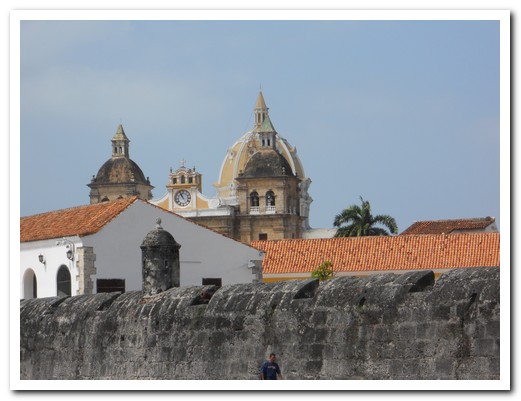
Old Cartagena behind the city walls
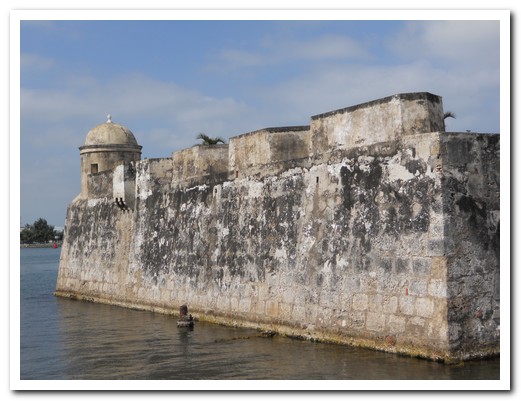
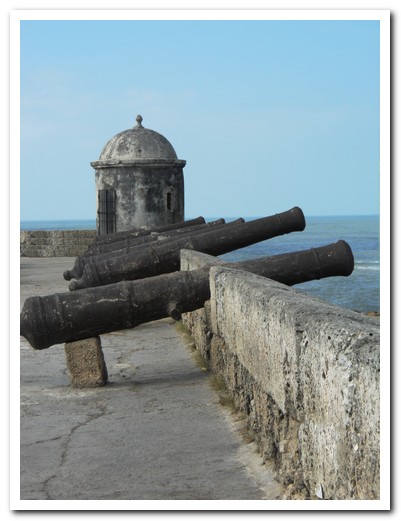
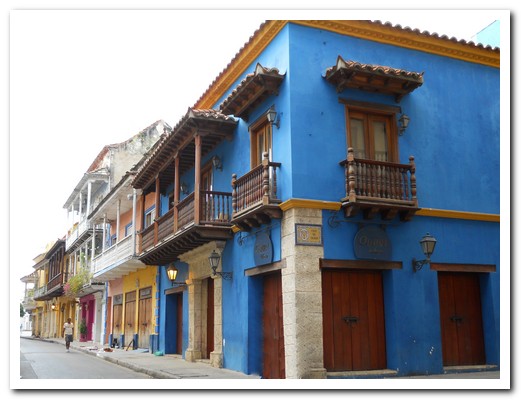
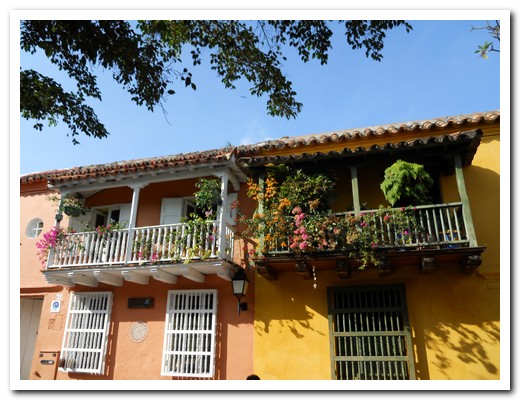
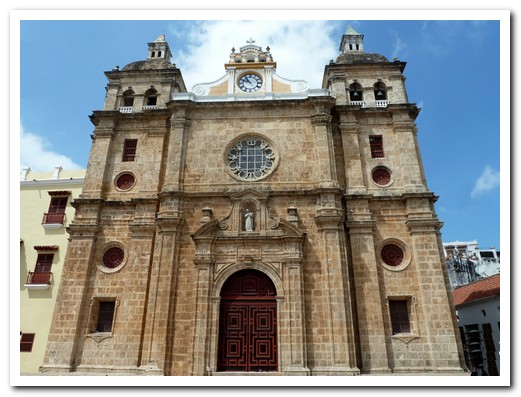
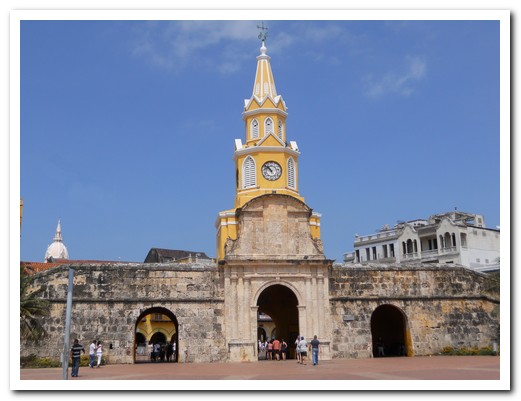
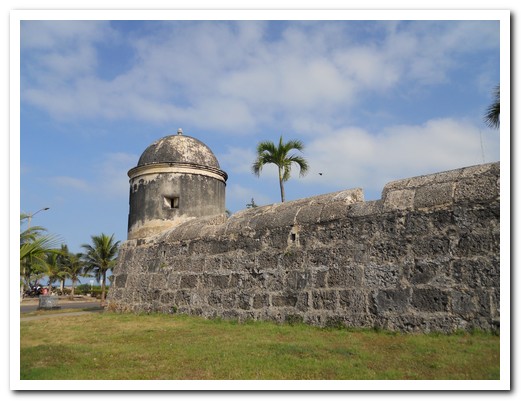
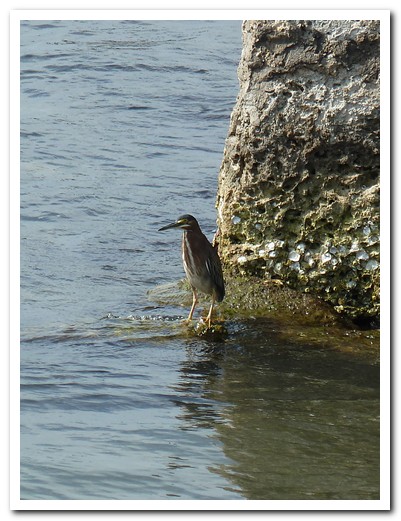
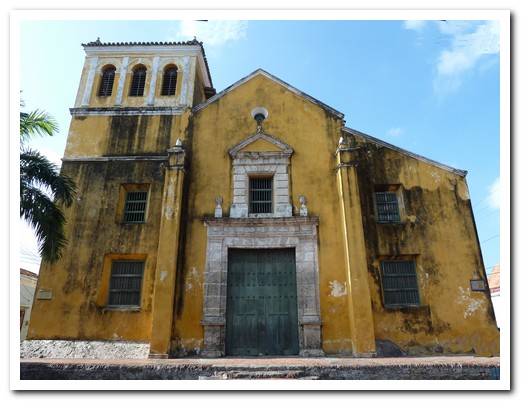
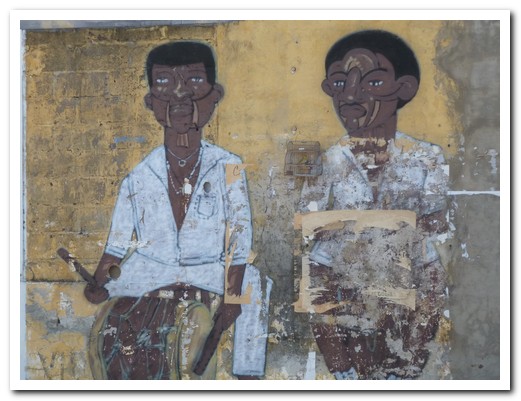
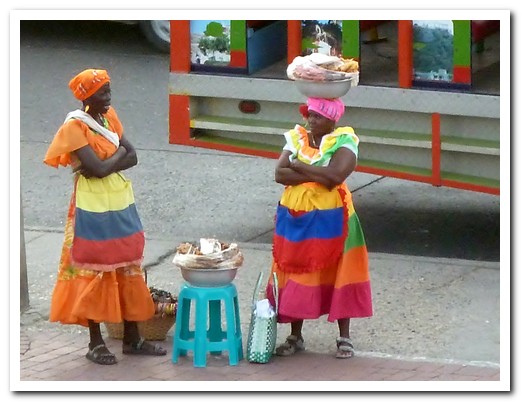
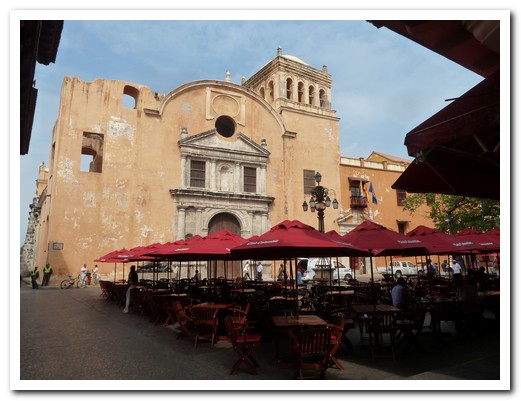
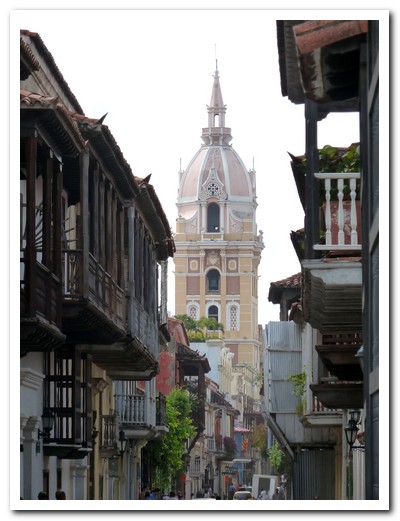
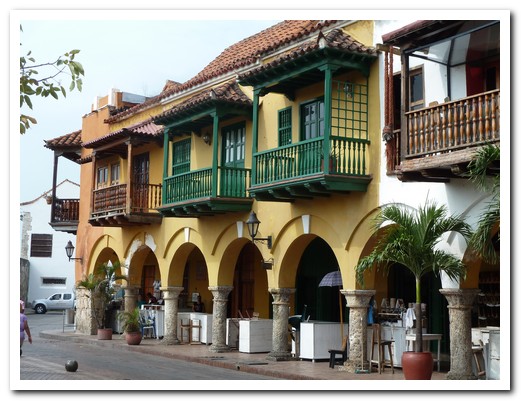
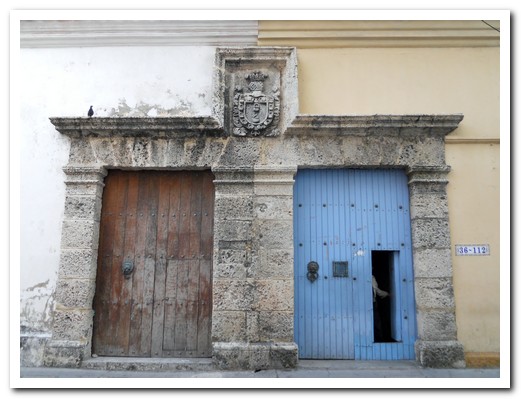
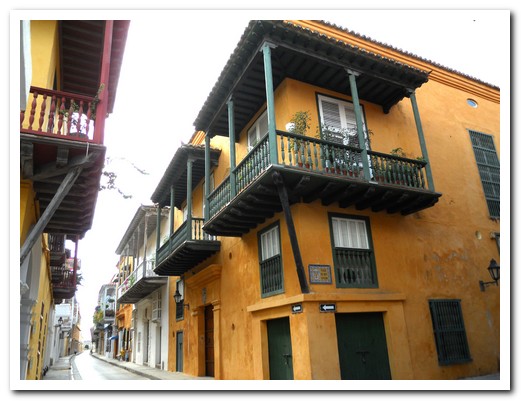
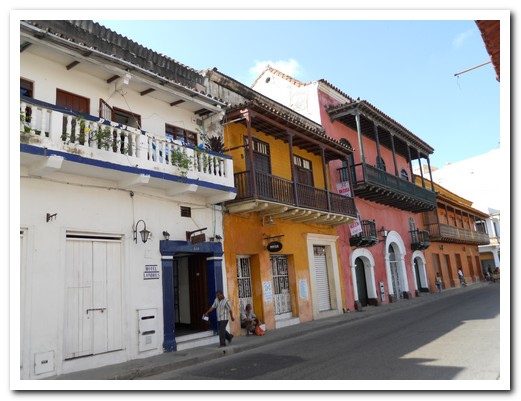
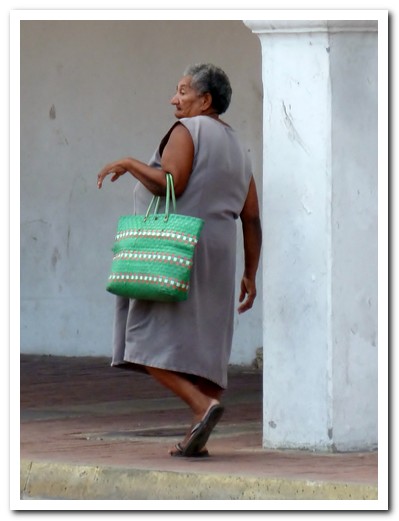
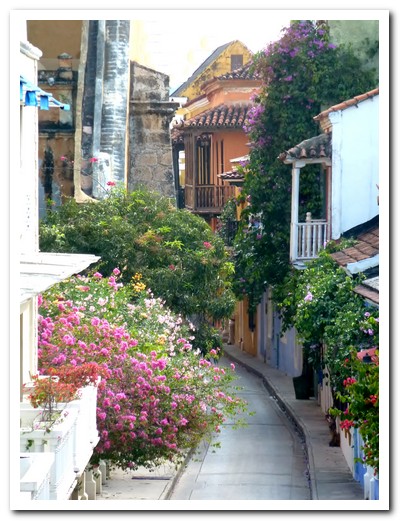
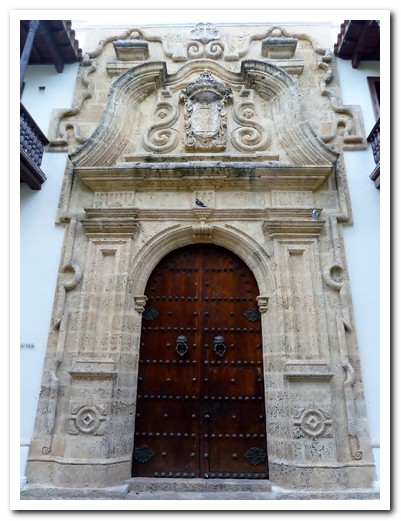
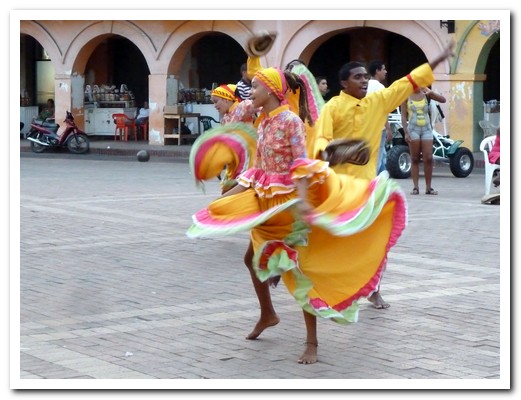
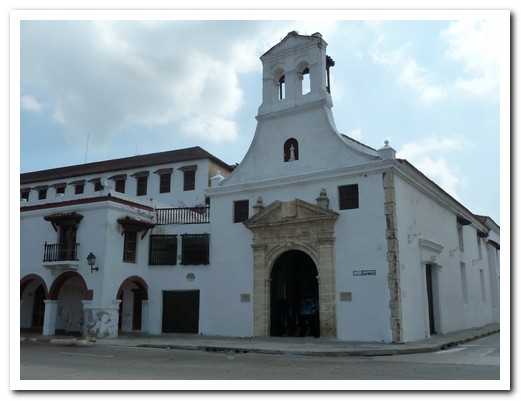
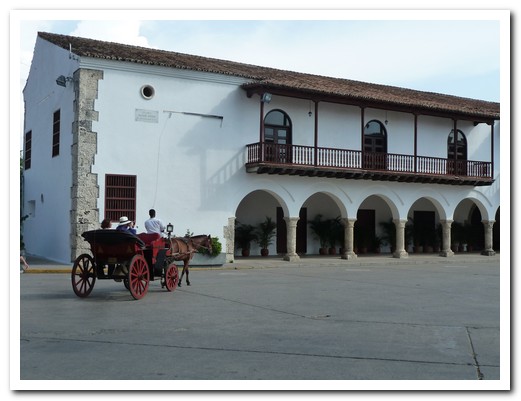
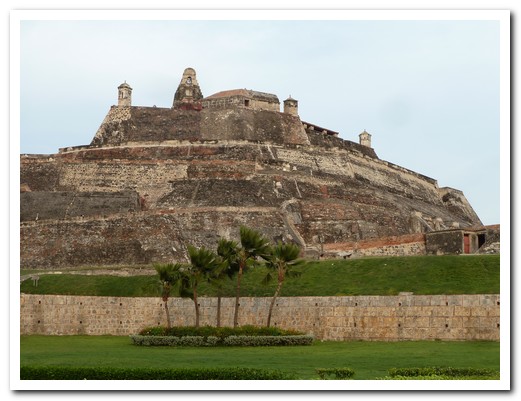
Castillo de San Felipe de Barajas took amost 200 years to build
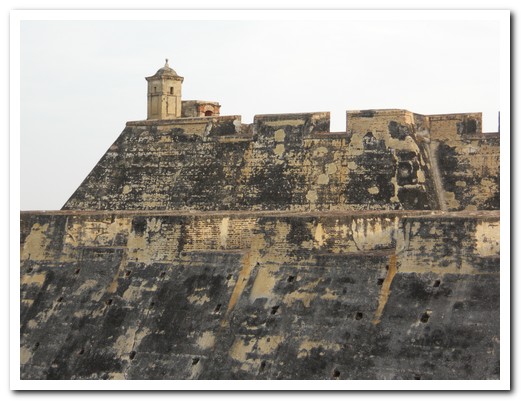
The Castle´s defenses were never breached
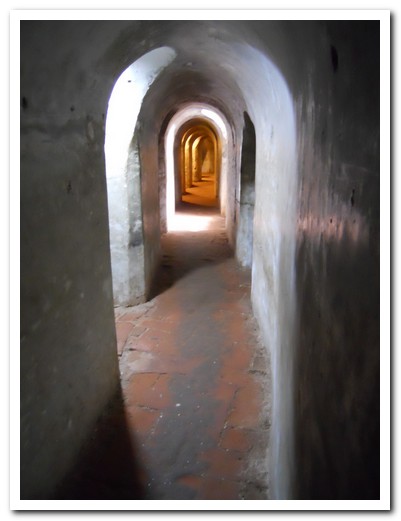
Tunnels under the fort
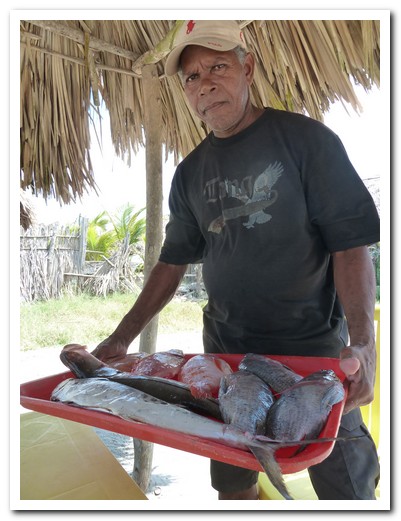
Which fish for lunch?
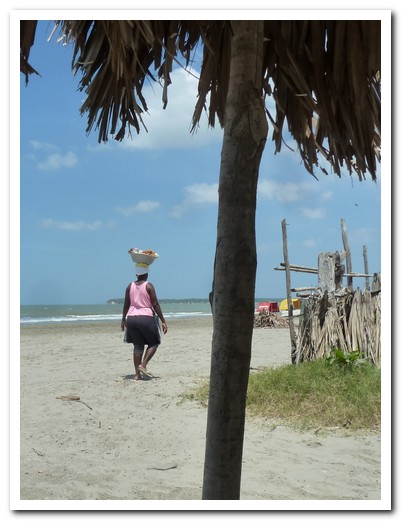
Lady selling stuff on the beach
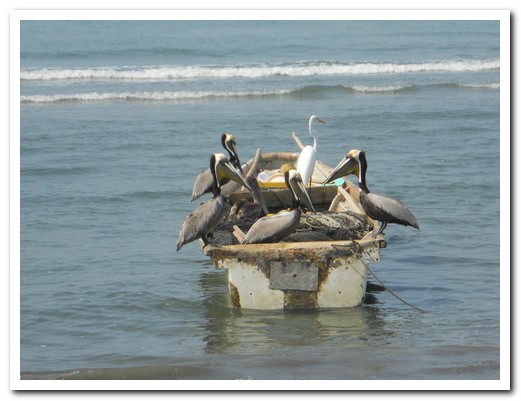
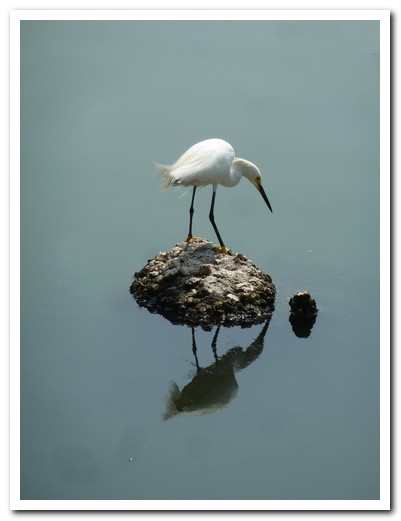
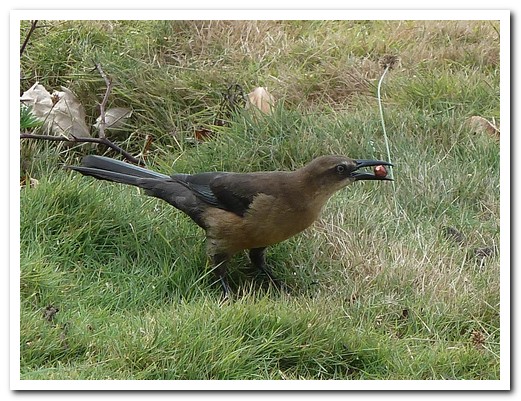
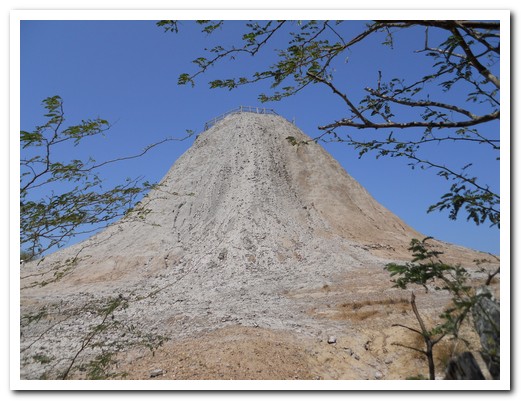
El Totumo mud volcano
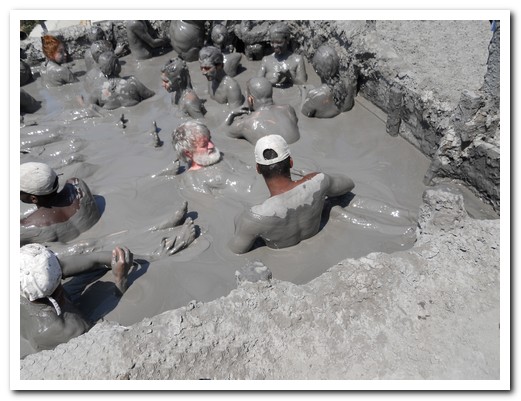
Jeff wallowing in the mud
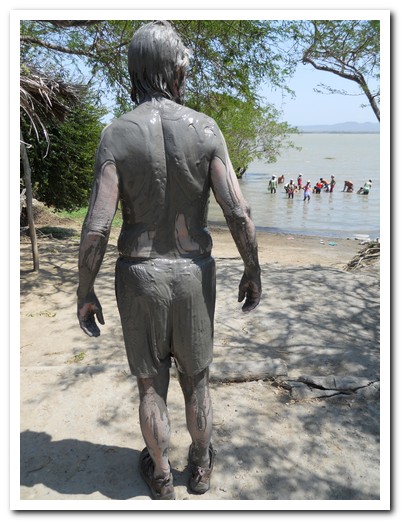
Heading down to the lake to wash off the mud
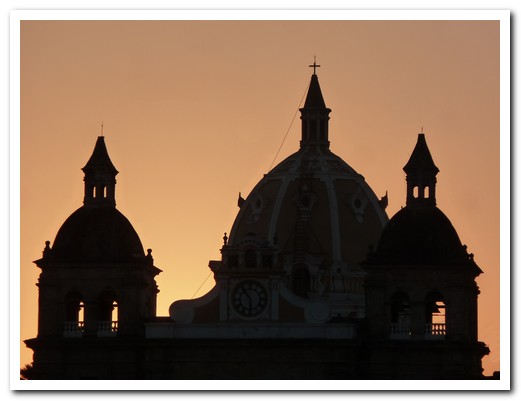
Sailing off into the sunset from Cartagena to Panama ¡Ojalá!
Salento
17th February 2011
We returned to Colombia by re positioning to the lovely little mountain village of Salento [15] in the middle of coffee country. Trout is on the menu at every restaurant in town. It is served on a plate sized, wafer thin crisp of mashed plantain called patacón (recipe).
.
In the Valle de Cocora, on the steep green slopes, hundreds of wax palms rise majestically out of the mist to some 60 metres. These palms, the tallest in the world, are the national tree of Colombia. They are slow growing and live over 100 years. Once facing extinction, they are now protected.
.
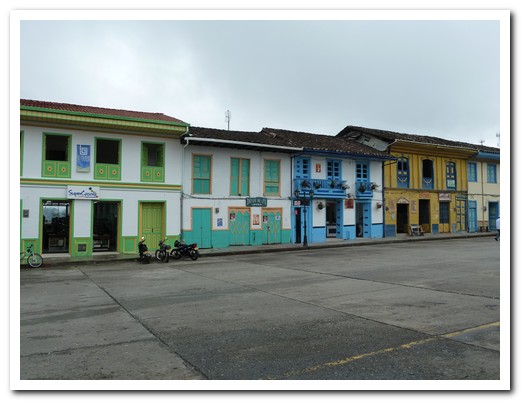
Salento
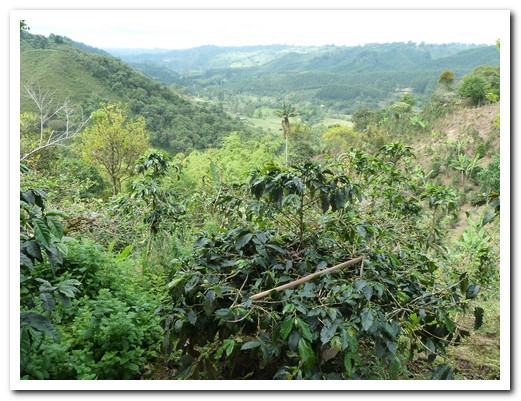
Organic coffee farm
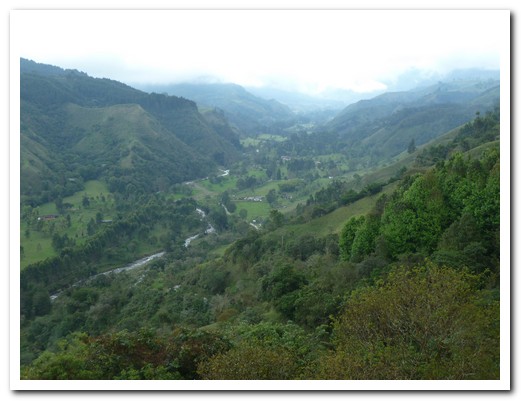
Valle de Cocora
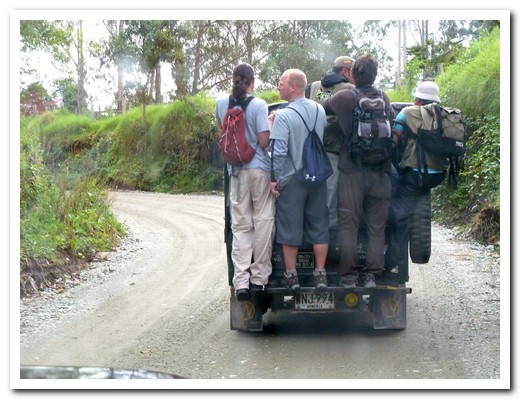
Always room for one more on the jeep ride to Cocora
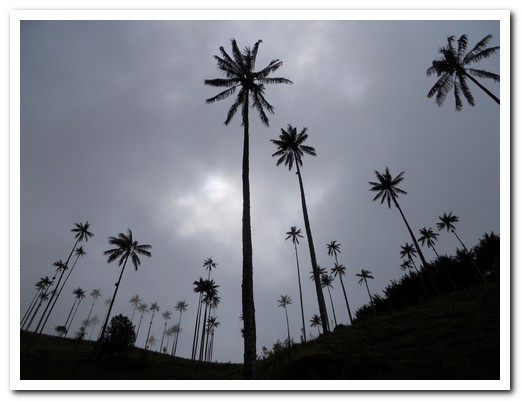
Wax palms
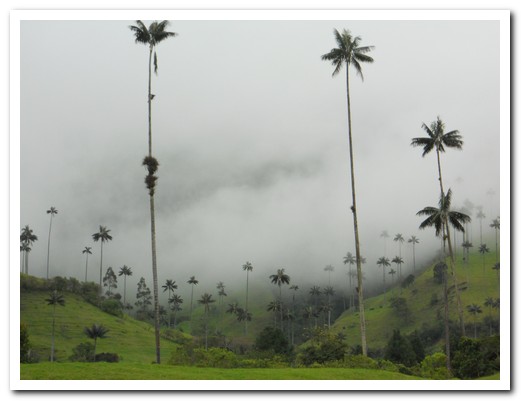
Wax palms
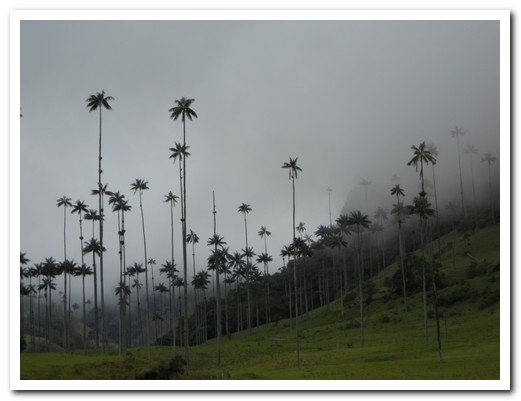
Wax palms
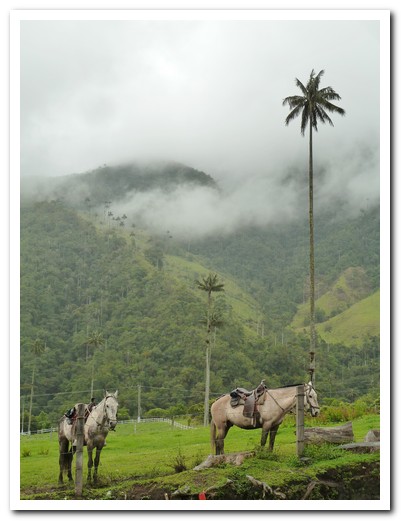
Horses in the rain - Cocora
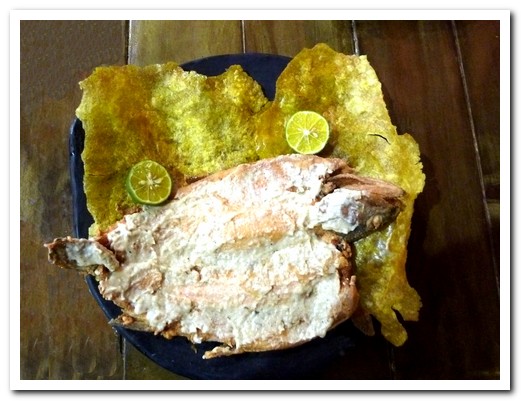
Trout with garlic sauce served on a patacón
Ecuadorian Amazon
12th February 2011
We were soon speeding down the Napo River after a 30 minute flight from Quito [2] into the small town of Coca [12] in the Ecuadorian jungle. The Napo River eventually empties out into the Amazon further south in Peru. After 2 hours on the river, a short trek through thick forest and a canoe ride across a tranquil lagoon, we reached Sacha Lodge [13] (listed in 1,000 Places to See Before You Die: A Traveler’s Life by Patricia Schultz and possibly one of the most bio diverse places in the world).
.
The eco lodge lies on 1800 hectares of privately owned undisturbed primary forest with most of their employees being from the nearby indigenous Quichua communities. The guides are expert on the flora and fauna around the lodge. We had many opportunities to view the wildlife by walking or canoeing either in the early morning or late in the afternoon when there was more activity. We spent the midday hours lazing in hammocks.
.
The highlight was a boat trip to see the parrot licks within the nearby Yasuní National Park. Every morning, thousands of bright green and blue parrots come to eat clay deposits on the Napo River. The parrots live by eating nuts from a variety of trees some of which have a toxin in the nut. Certain minerals in the clay are able to neutralize the toxins in these nuts. The male parrots guard the nests and young whilst the females gorge themselves on the clay which they regurgitate when they return to their nests up to 50 kilometres away.
.
Click to compare with Peruvian Amazon, the Bolivian Amazon or the Amazon River to Santarém & Amazon River to Manaus.
.
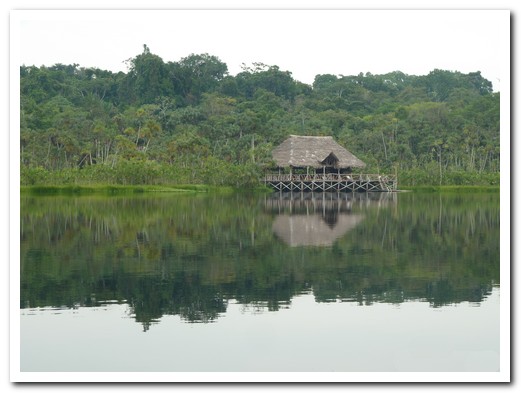
Sacha Lodge reflected in the lagoon
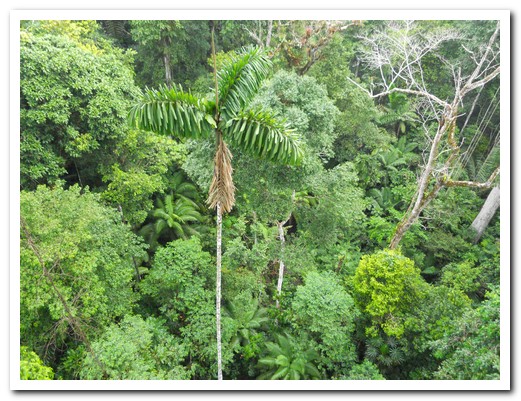
200 species of tree per hectare
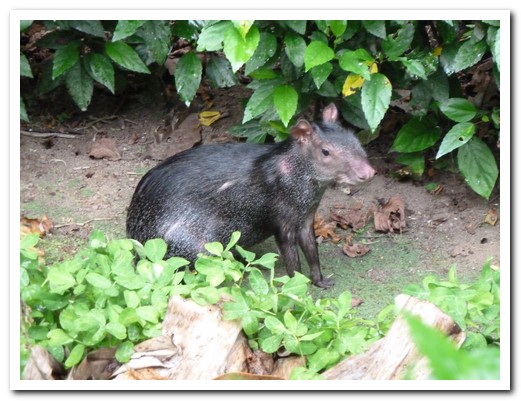
Black Agouti near our cabin
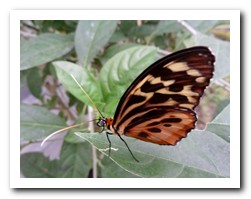 |
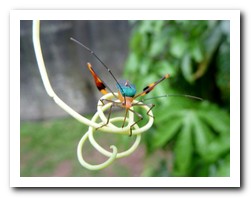 |
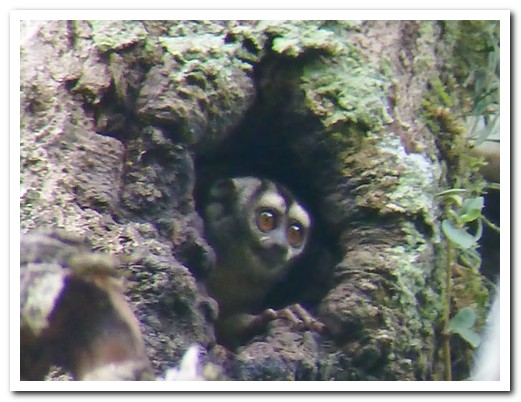
Nocturnal owl monkey
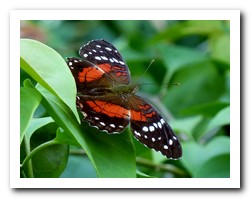 |
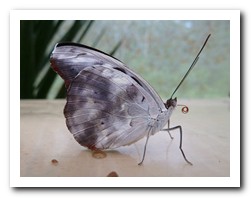 |
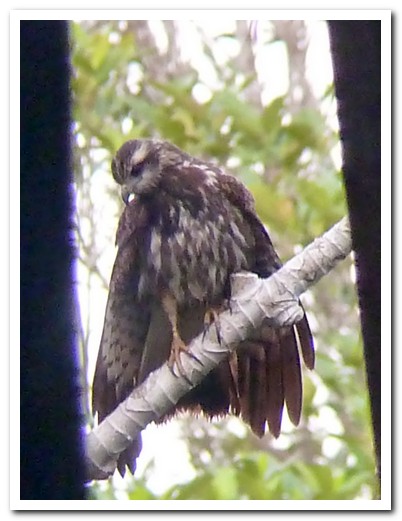
Snail kite
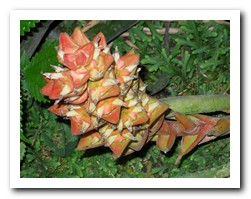 |
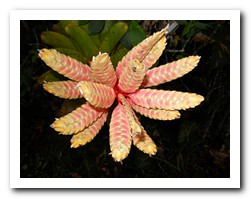 |
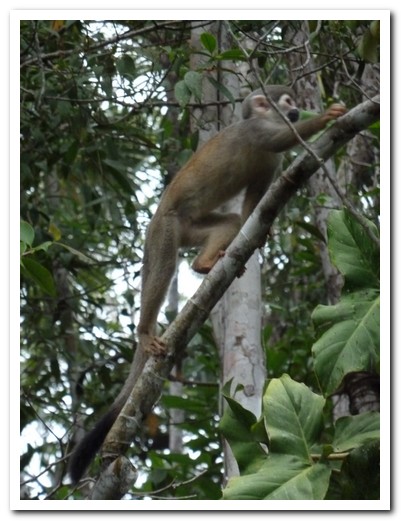
Squirrel monkey
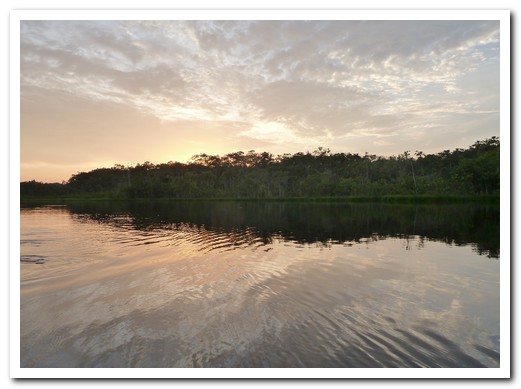
Sunset over the lagoon
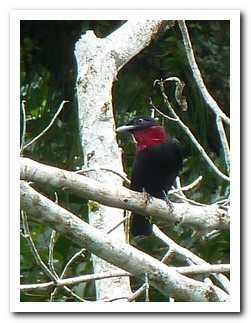 |
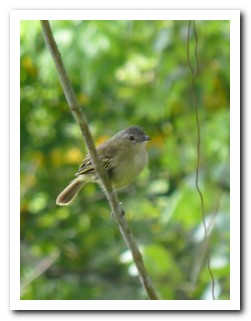 |
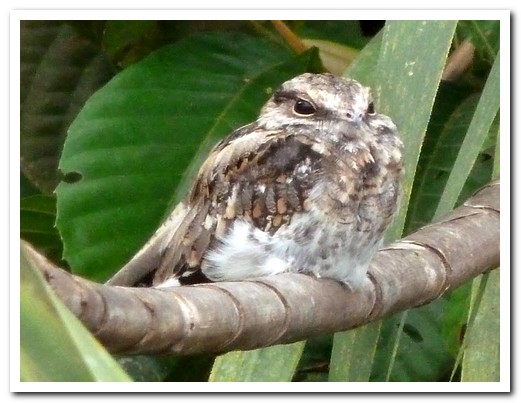
Nightjar
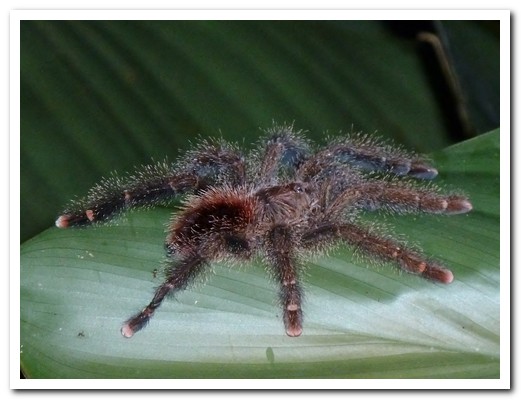
Tarantula
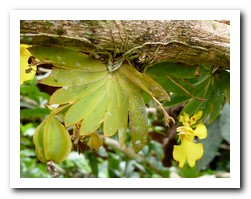 |
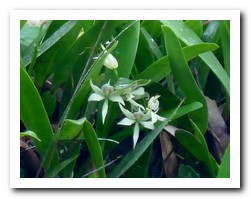 |

Green lizard
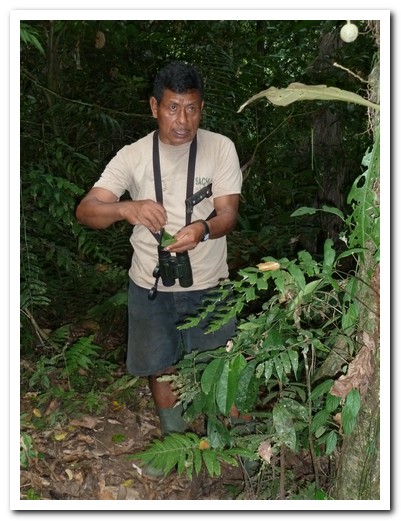
Our local guide Ernesto explains the medicinal use of a jungle plant
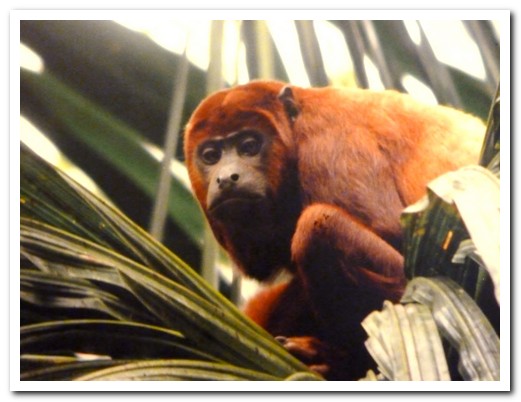
Howler monkey
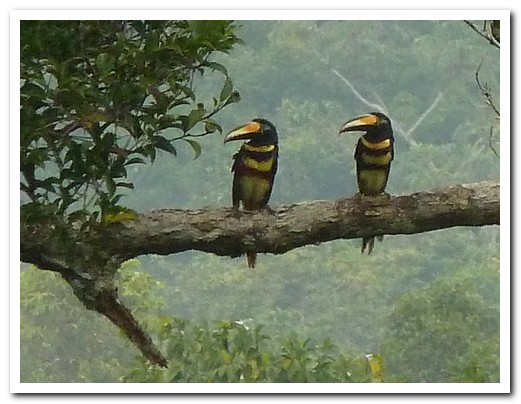
A pair of Many Banded Aracaris
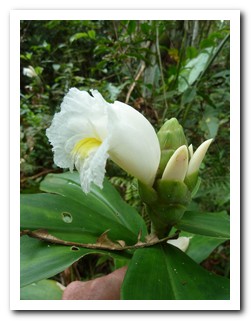 |
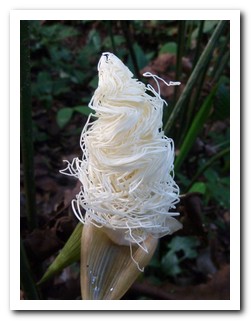 |
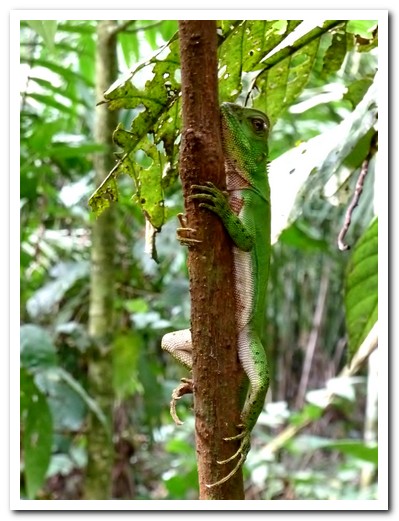
Green lizard hugs the tree

Marco, our guide, paddles us up a creek
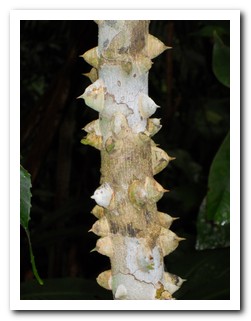 |
 |
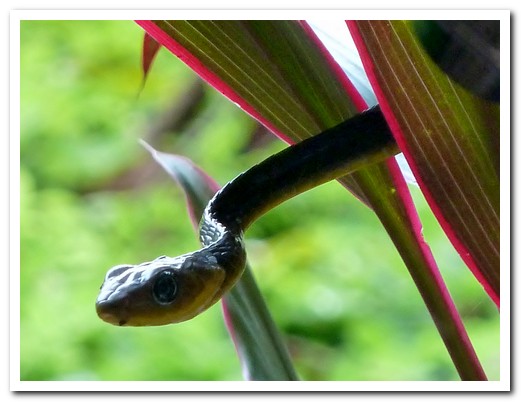
Whip snake
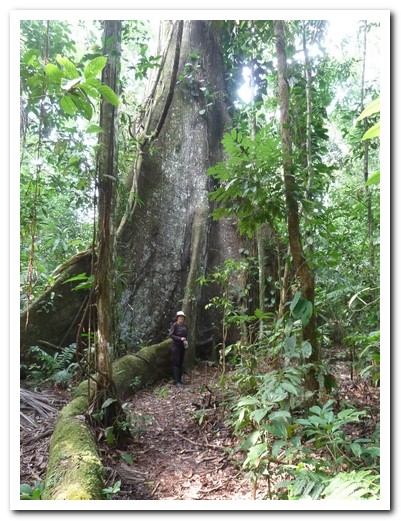
Giant ceiba tree

Boardwalk to the lodge
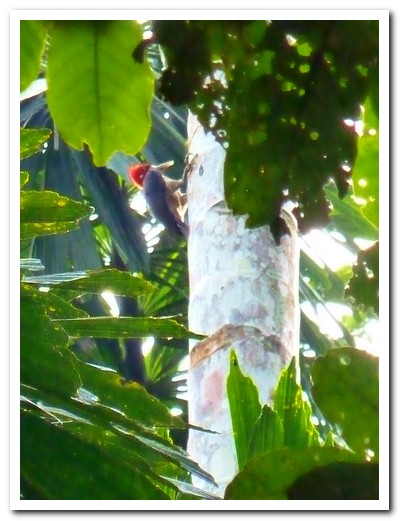
Woodpecker
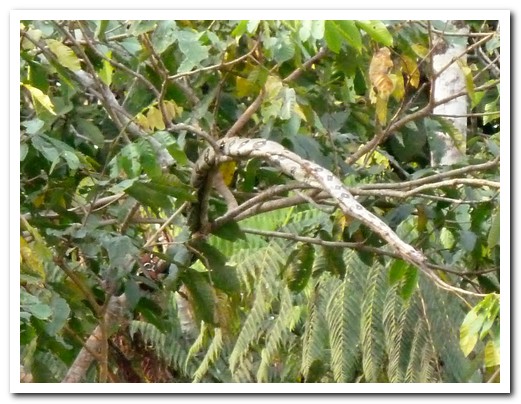
Boa
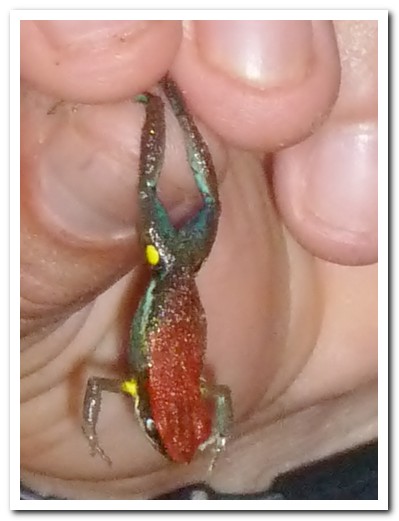
Poison dart frog
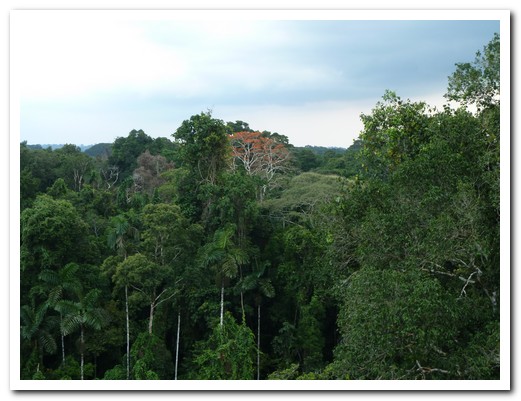
Jungle canopy
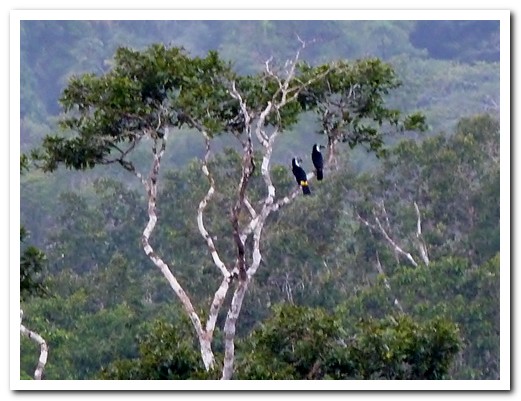
Toucans
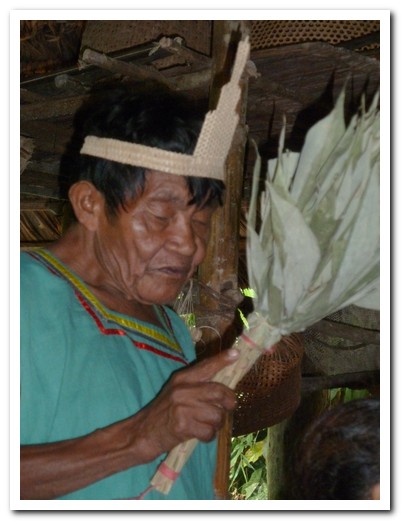
Shaman from a nearby village
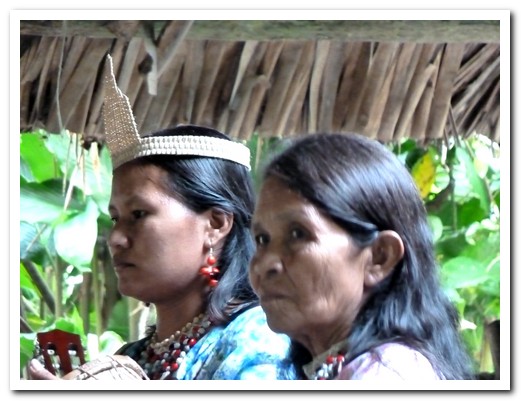
Village women
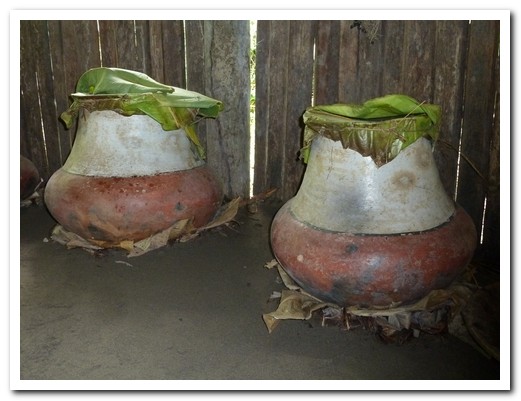
Chicha brewing in ceramic pots
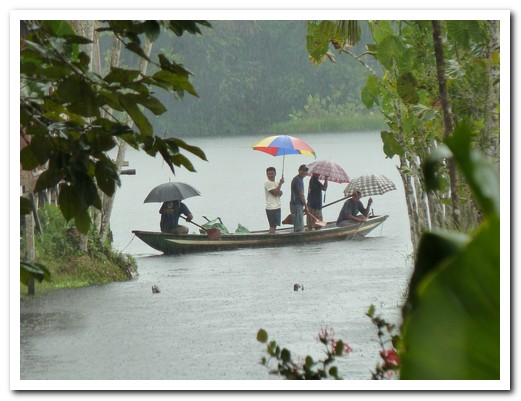
Canoeing in the rain
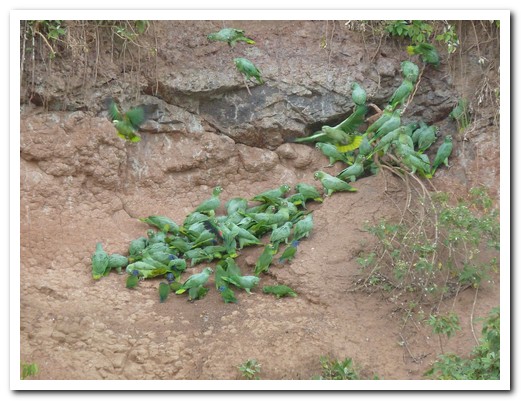
Parrots on the clay lick
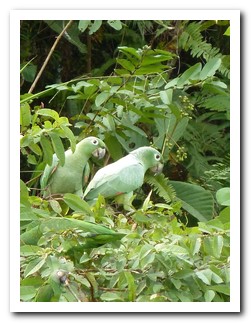 |
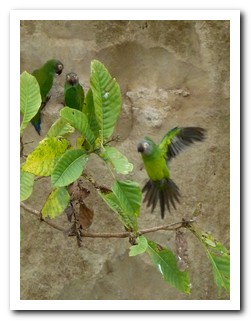 |
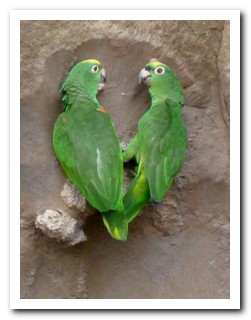 |
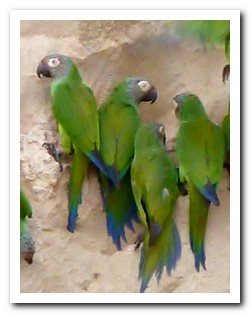 |
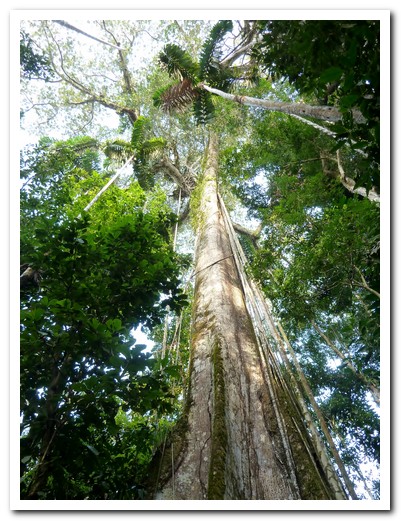
Really tall tree
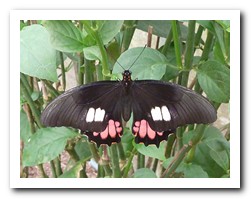 |
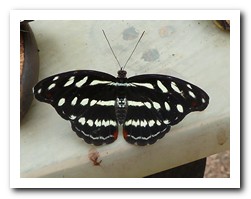 |
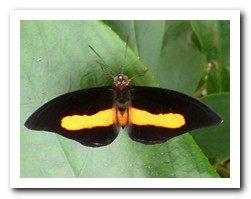 |
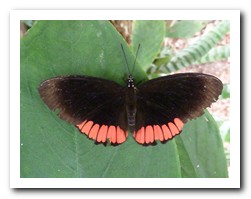 |
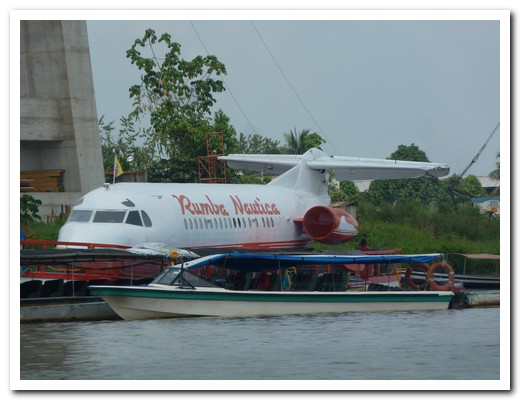
An F28 became a floating disco on the Napo River at Coca after crashing there
Otavalo
06th February 2011
The city of Otavalo [11], at 2600 meters is 2 hours northeast of Quito and sits near the tranquil lake San Pedro at the base of Imbabura Volcano. The Saturday handicraft market at the Plaza de los Ponchos, famous for multi coloured woven textiles, traditional musical instruments and other quality hand made products, always draws a crowd.
.
The Otavaleños proudly wear their traditional clothes. The men have their hair long and plaited, wear calf length trousers and a blue poncho. The women, a white embroidered blouse, lots of gold coloured beads around the neck, a shoulder wrap and an ankle length skirt (anaco) fastened with an intricately woven cloth belt (faja). Both wear simple sandals (alpargatas) which were once made from hemp.
.
Just outside of Otavalo, the Condor Park provides refuge for injured birds of prey. We enjoyed the flying show they put on there. Next day we did a pleasant 14 kilometre walk around the volcanic lake Mojanda, about 4,000 meters up.
.
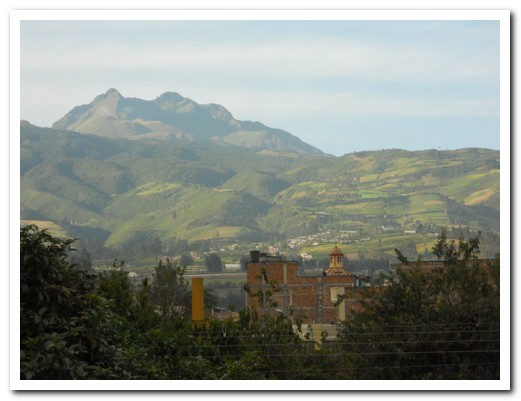
Mountains around Otavalo
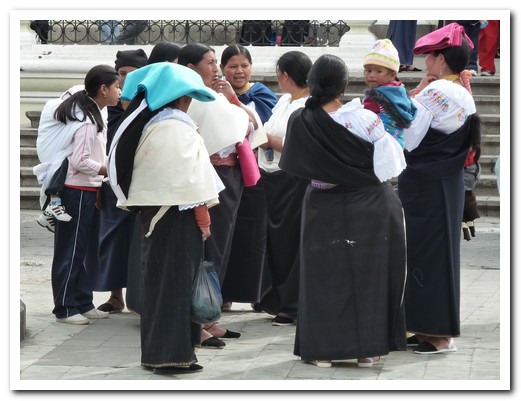
Local women chatting
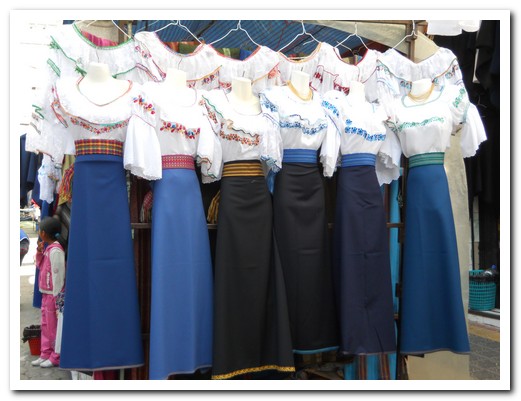
Traditional fashion
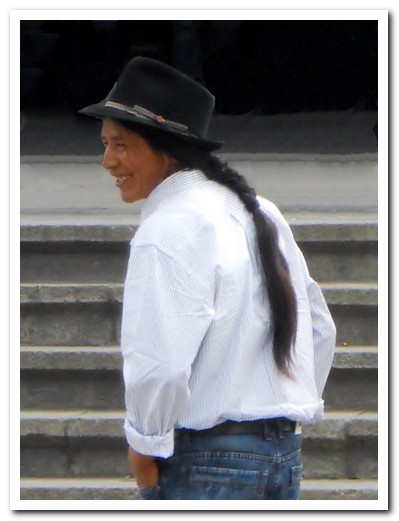
Otavaleño
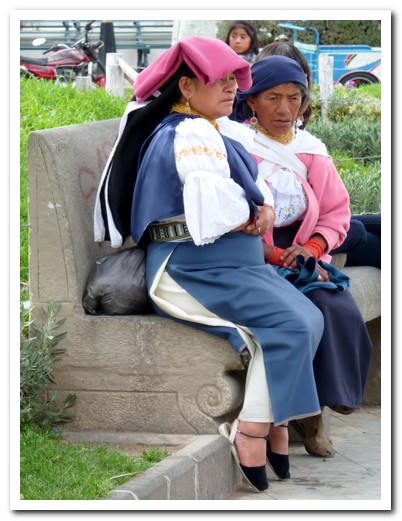
Two ladies resting
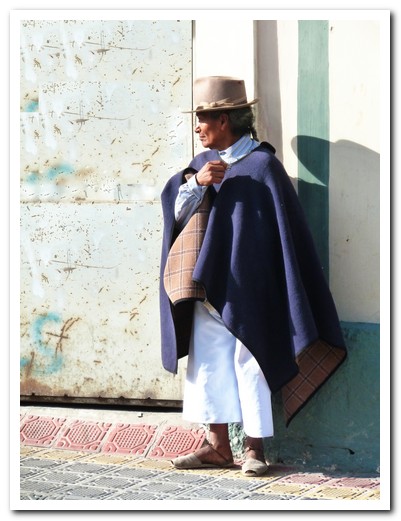
Typical men´s dress
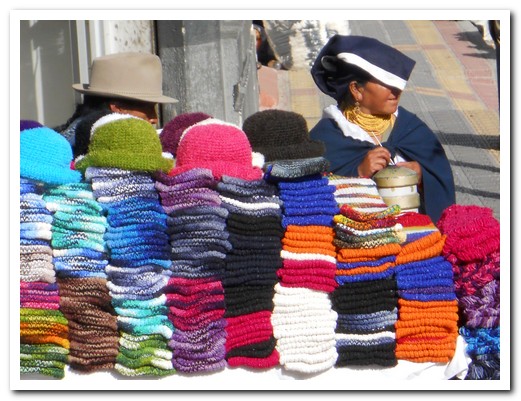
Saturday market
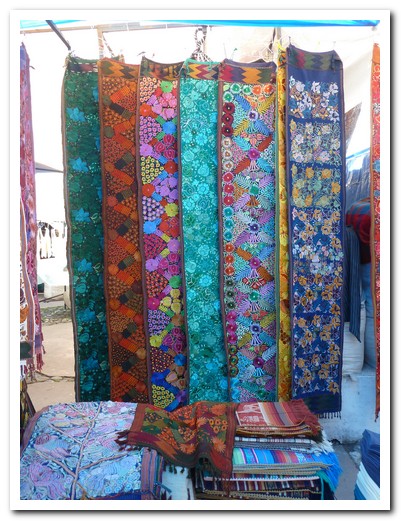
Colourful weaving
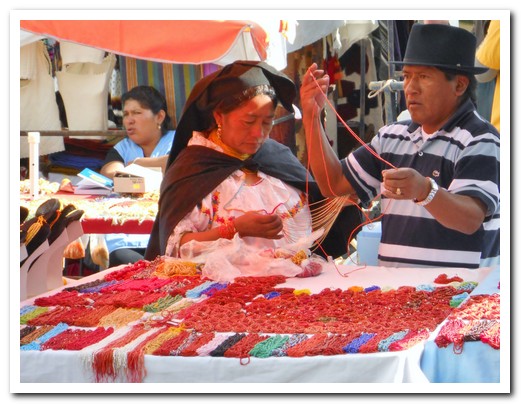
Red beads for sale
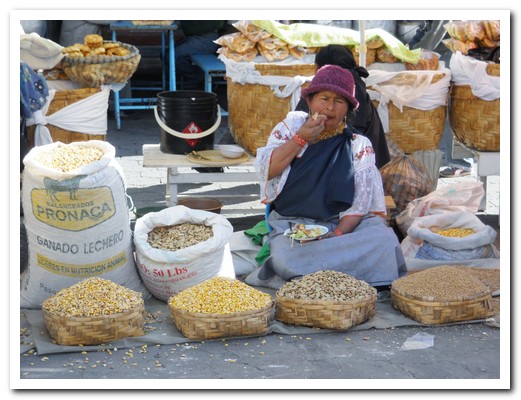
Lady selling corn
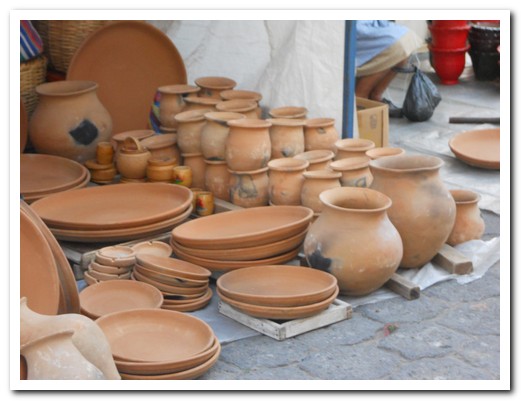
Local pottery
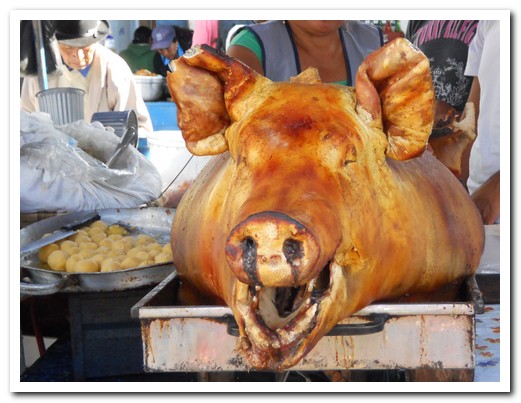
There is always pork
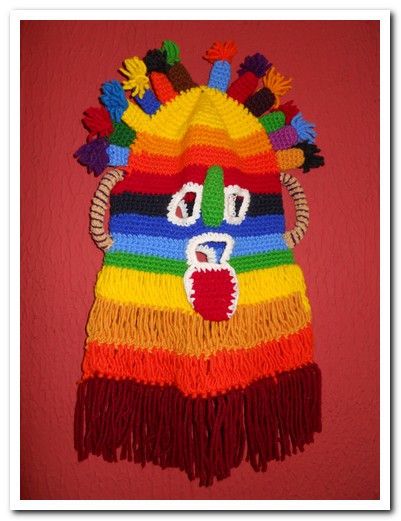
Mask worn for celebrations
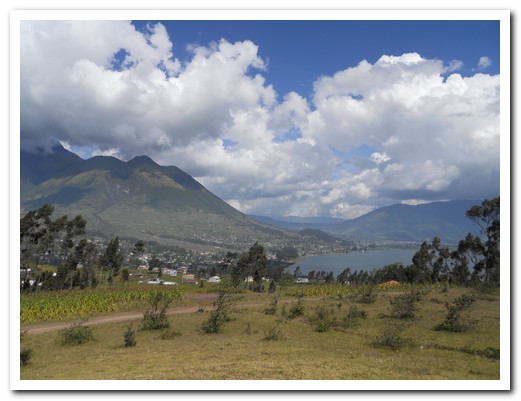
Lago San Pedro
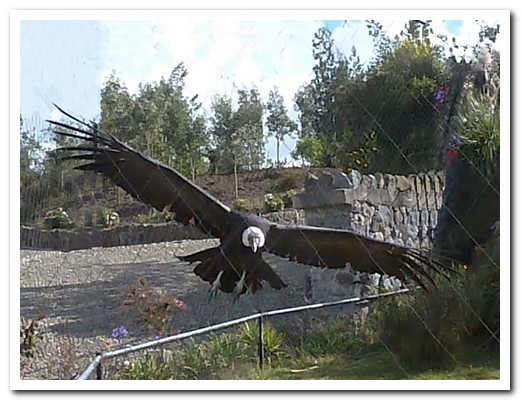
Condor at the refuge outside Otavalo
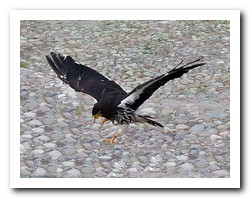 |
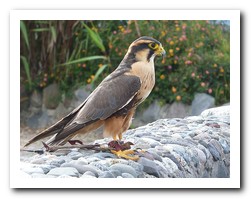 |
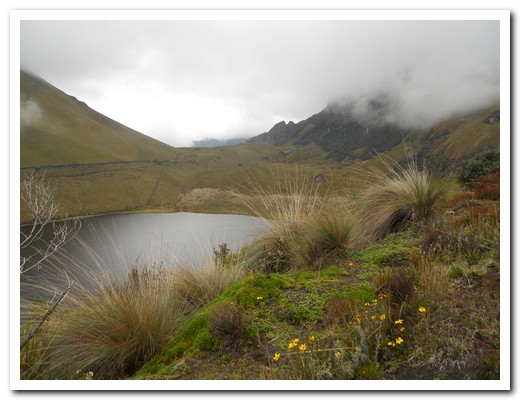
Lago Mojanda
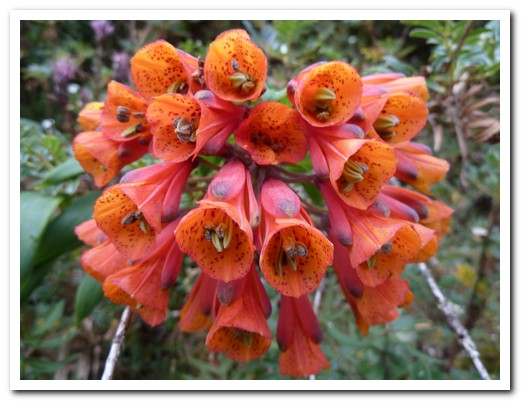
Wildflowers around the lake
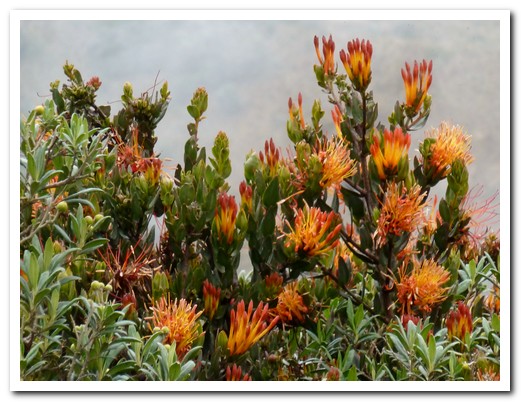
More wildflowers
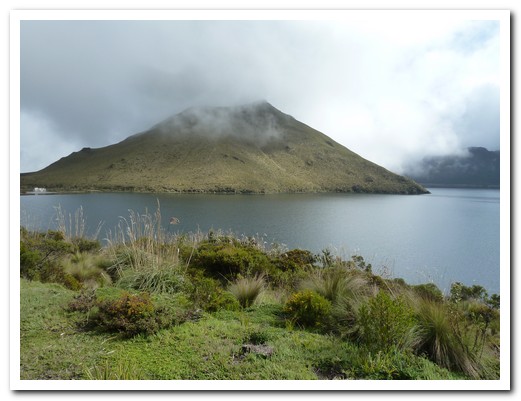
Lago Mojanda
Mindo
03rd February 2011
The little village of Mindo [10] lies hidden in cloud forest on the western slopes of the Andes, 2 hours by bus from Quito. It is a paradise for lovers of birds, butterflies and orchids. We could not tear ourselves away from the dozens of hummingbirds flitting around the lush gardens of our lodging, the Dragonfly Inn. Over 500 species of birds have been spotted around Mindo – for great bird pictures from Ecuador, click here.
.
Trails lead through dense forest to secluded waterfalls. In the early morning the birds are most active. The blooms at the family run orchid gardens are local species, unlike anything we had seen before. Some of the orchids so small they had to be seen through a magnifying glass. We walked a few kilometres along the road to the butterfly farm; it was hard to leave.
.
Mindo has its very own, small scale chocolate factory, so of course we did the tour and tasted the product.
.
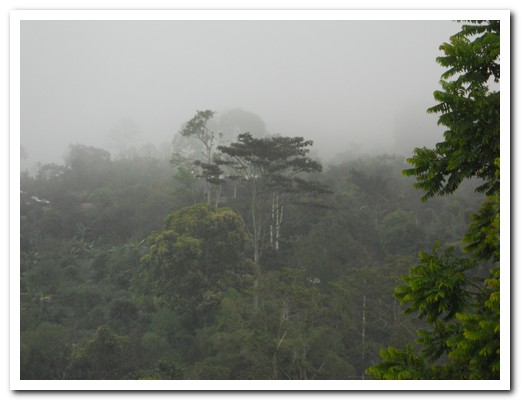
Cloud forest around Mindo
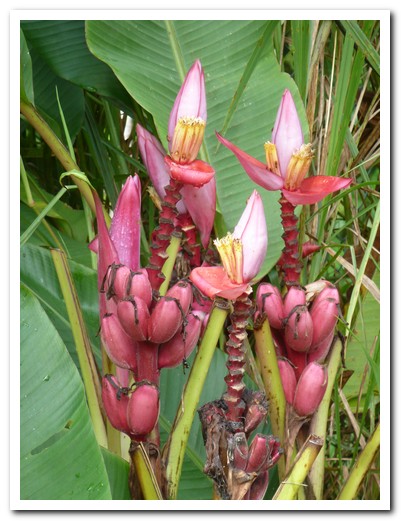
Banana flower
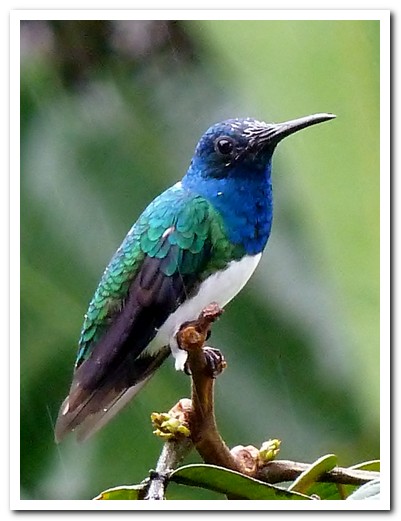
Hummingbird
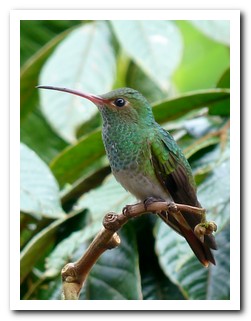 |
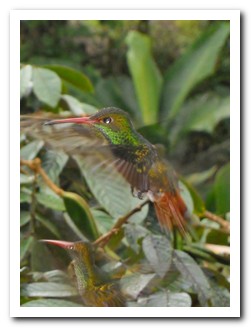 |
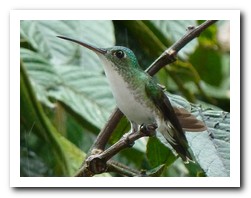 |
 |
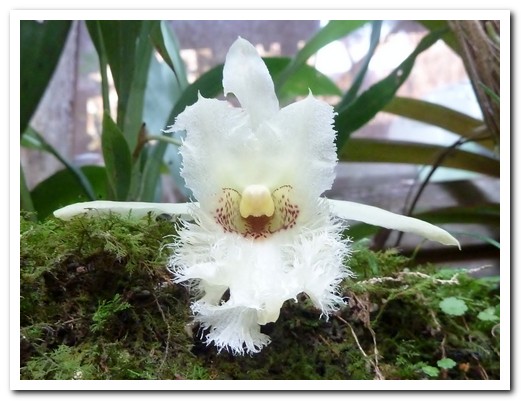
Orchid
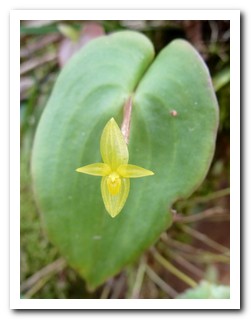 |
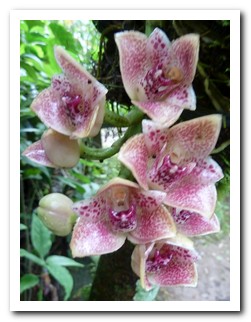 |
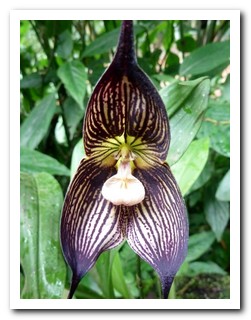 |
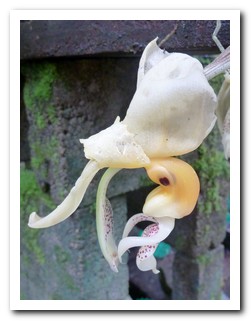 |
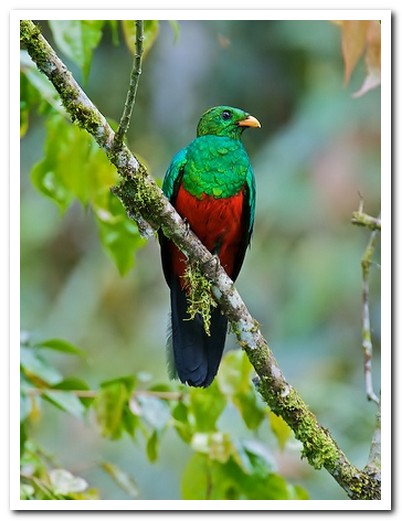
Quetzal - National bird of Ecuador
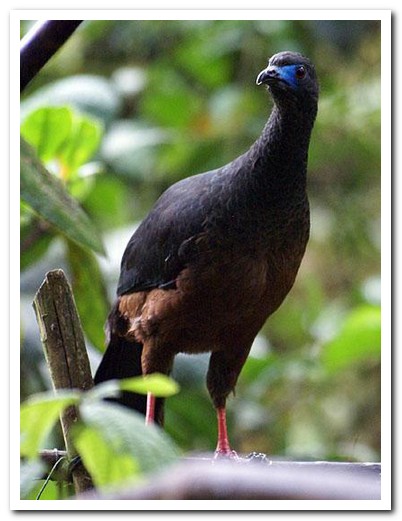
Guan
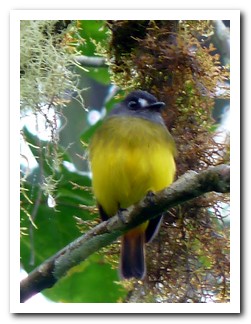 |
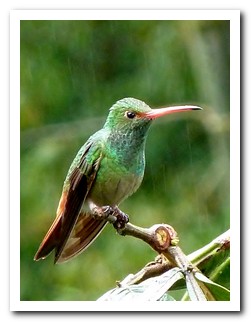 |
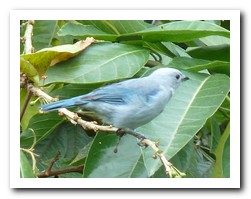 |
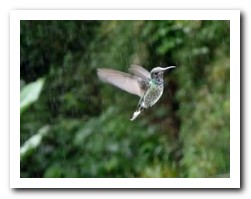 |
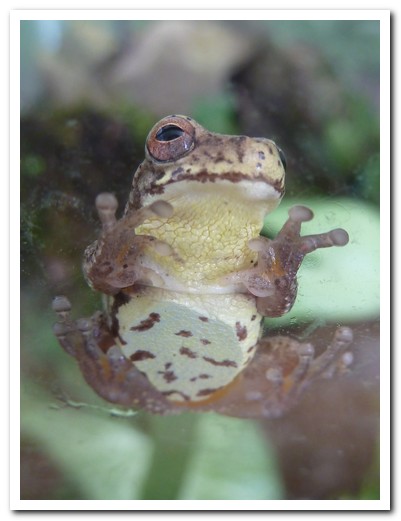
Tiny frog
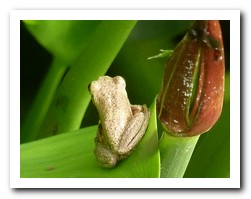 |
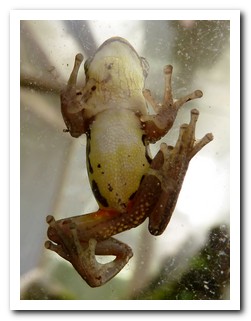 |
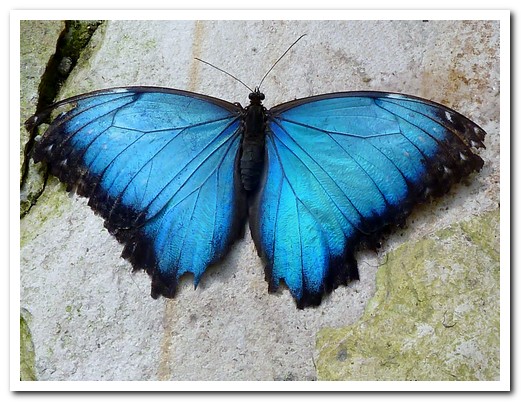
Blue butterfly
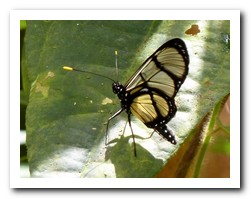 |
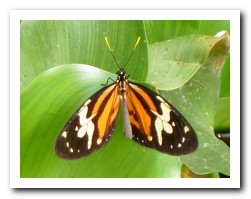 |
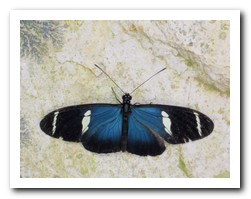 |
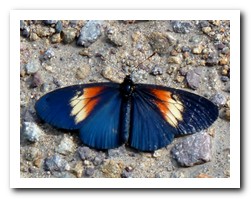 |
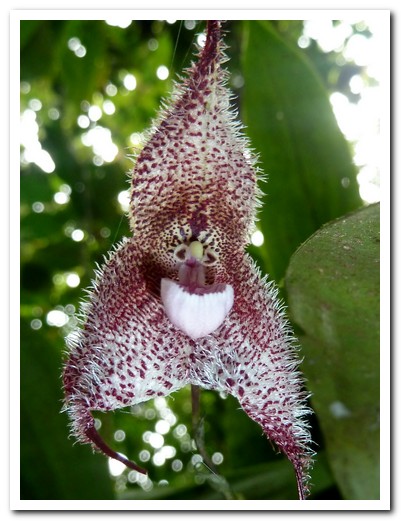
Orchid
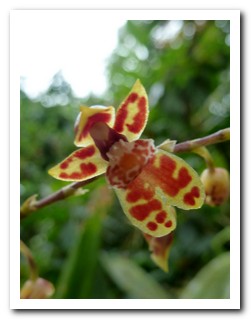 |
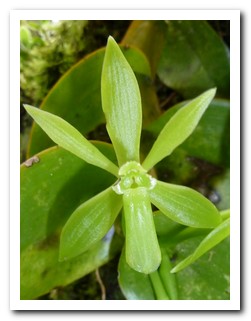 |
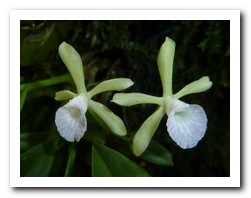 |
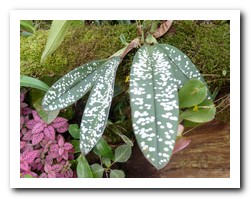 |
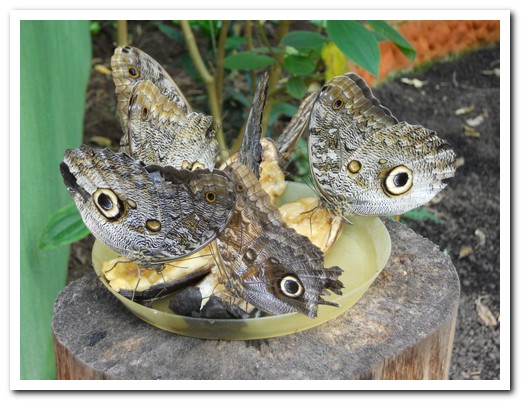
Owl butterflies feeding on bananas
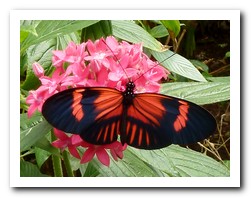 |
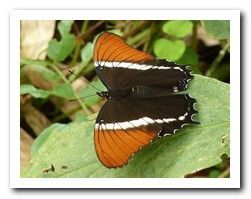 |
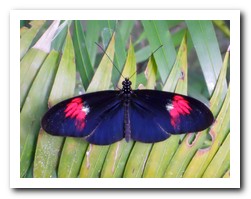 |
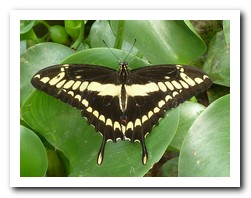 |
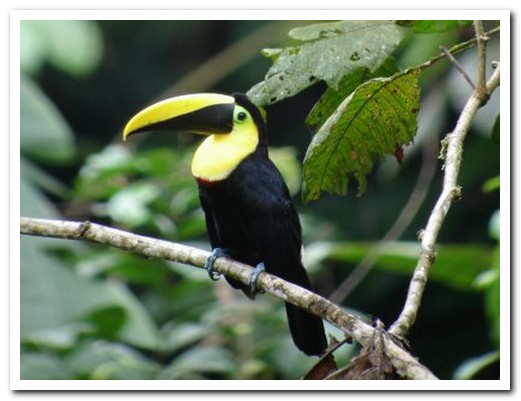
Choco toucan
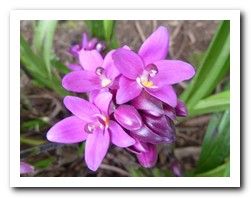 |
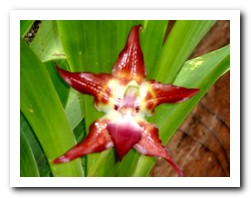 |
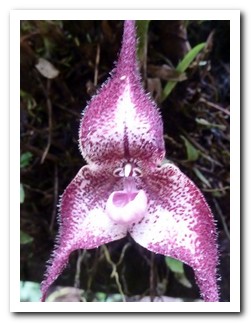 |
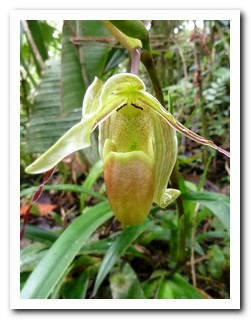 |
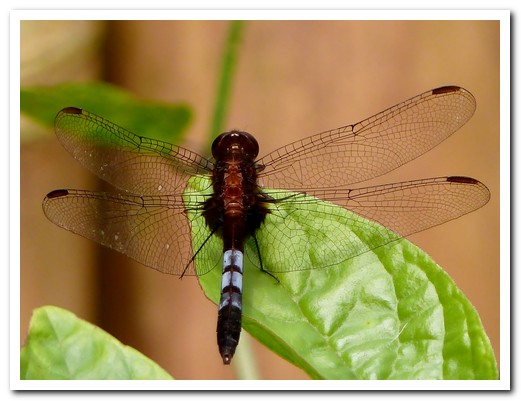
Dragon fly
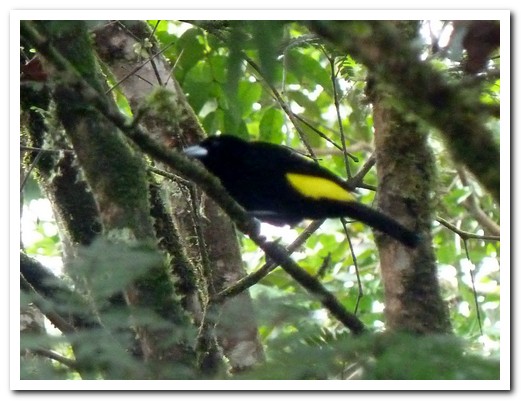
Black and yellow bird in the forest
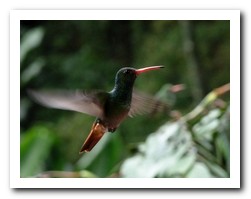 |
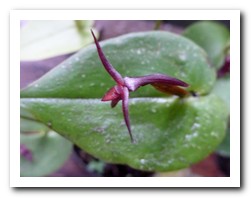 |
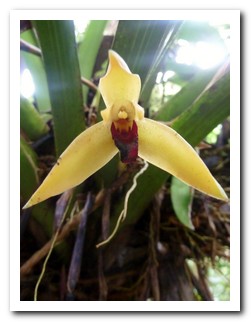 |
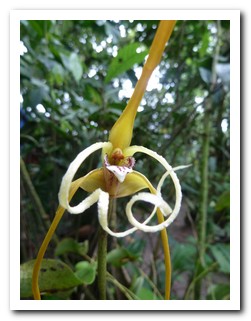 |
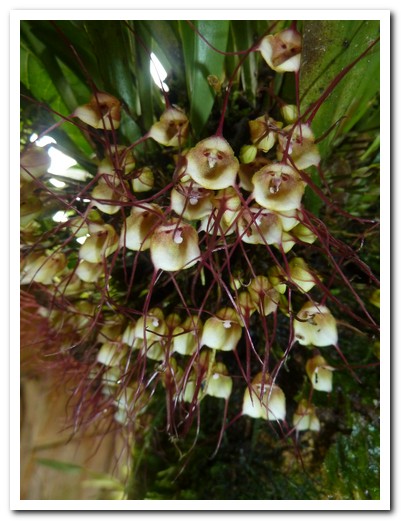
Orchids
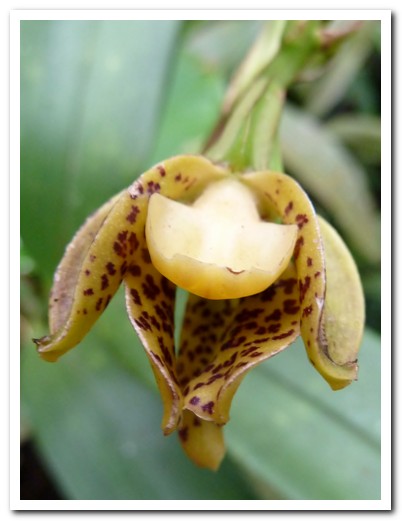
Orchid
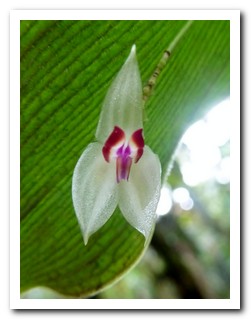 |
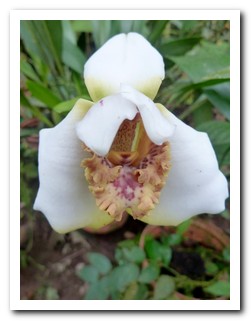 |
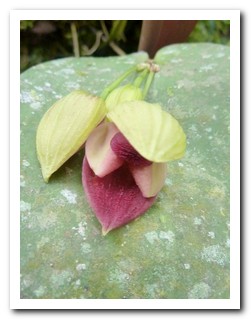 |
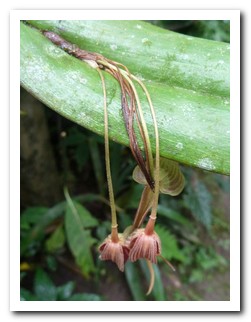 |
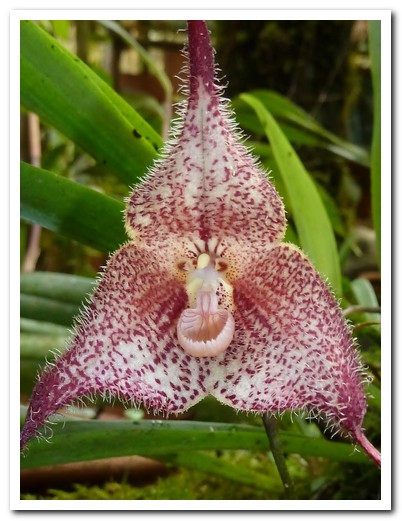
Orchid
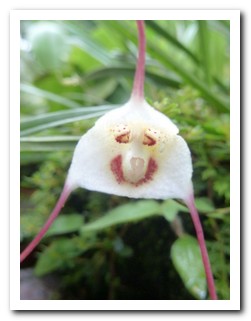 |
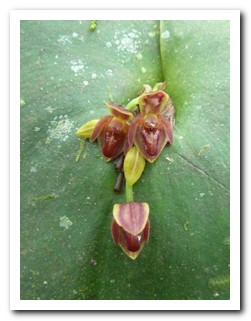 |
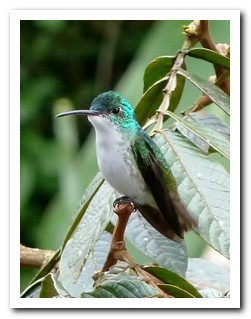 |
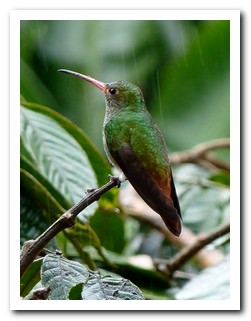 |
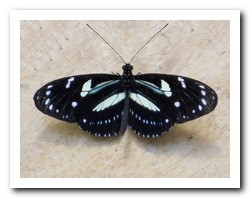 |
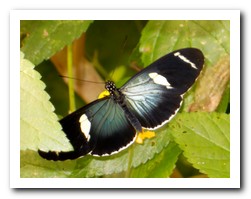 |
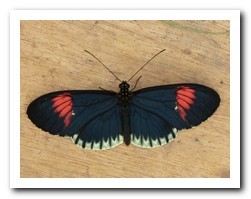 |
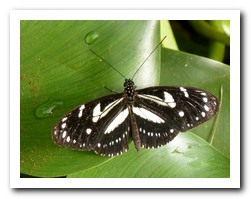 |
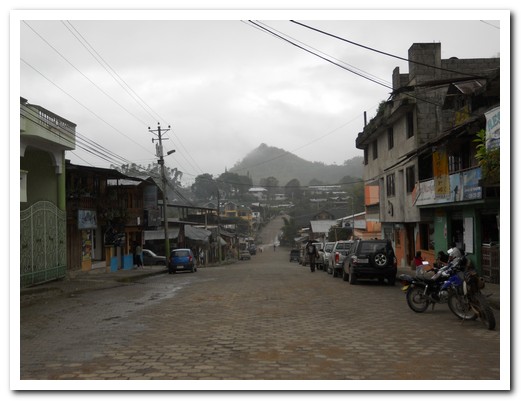
Main street of Mindo